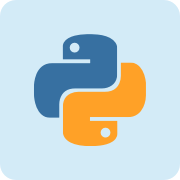Python参考手册
Python startswith()方法
Python startswith()方法
Python startswith()方法

描述
Python startswith() 方法用于检查字符串是否是以指定子字符串开头,如果是则返回 True,否则返回 False。如果参数 beg 和 end 指定值,则在指定范围内检查。
语法
startswith()方法语法:
str.startswith(str, beg=0,end=len(string));
参数
- str -- 检测的字符串。
- strbeg -- 可选参数用于设置字符串检测的起始位置。
- strend -- 可选参数用于设置字符串检测的结束位置。
返回值
如果检测到字符串则返回True,否则返回False。
实例
以下实例展示了startswith()函数的使用方法:
#!/usr/bin/python str = "this is string example....wow!!!"; print str.startswith( 'this' ); print str.startswith( 'is', 2, 4 ); print str.startswith( 'this', 2, 4 );
以上实例输出结果如下:
True True False

| Python startswith()方法 |
|---|

Python 是一种面向对象的解释型计算机程序设计语言,由荷兰人 Guido van Rossum 于1989年发明,第一个公开发行版发行于1991年。 Python 是纯粹的自由软件, 源代码和解释器 CPython 遵循 GPL 协议。Python 语法简洁清晰,特色之一是强制用空白符( white space )作为语句缩进。
| 主页 | https://www.python.org/ |
| 源码 | https://github.com/python/cpython |
| 版本 | 2.7 |
| 发布版本 | 2.7.13 |
 加载中,请稍侯......
加载中,请稍侯......